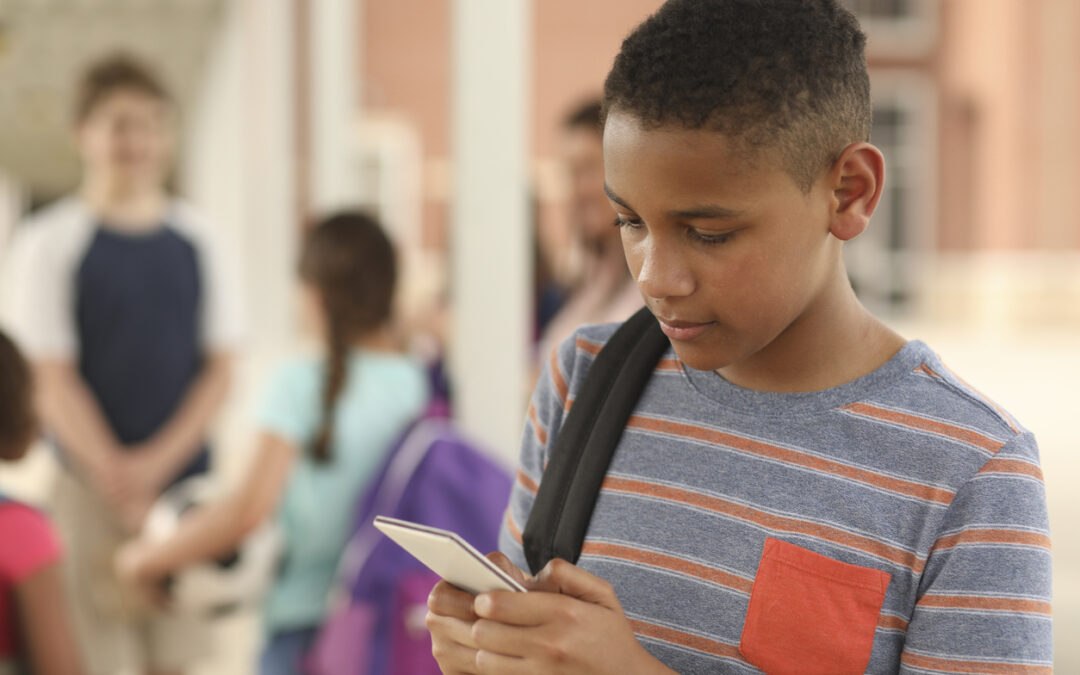In 2019, 95% percent of 3- to 18-year-olds were reported to have home internet access, according to the American Community Survey (ACS). In a separate survey, researchers found that 55% of children own a tablet or smartphone, while only 30% of parents reported feeling confident enough to discuss internet safety issues.
Despite the prevalence of technology and internet access in today’s digital world, the burden of educating students on how to engage with this technology safely and effectively has remained somewhat ambiguous.
What is Digital Citizenship?
Digital citizenship includes knowledge, skills and practices to engage safely and responsibly in a digital environment. This is considered an important skill for students to protect them from harmful content, cyberbullying, privacy risks, scams, viruses and more.
Why is Digital Citizenship Important?
Digital citizenship in education is an important way to ensure students, regardless of their level of access or knowledge at home, have the ability to learn how to use technology safely and effectively. Cyberthreats abound, with an online attack happening every 39 seconds. 59% of U.S. teens have been cyberbullied or threatened online, one in seven children is contacted online by someone with sexual intentions, and most children are likely to have seen pornographic content online by the age of 15.
Digital citizenship provides skills to avoid, mitigate and communicate about these threats in a safe and responsible way. Below are some of the important skills digital citizenship teaches:
Improves Digital Safety
One of the most important reasons to teach digital citizenship to students is to help them understand and engage in practices that help improve their digital safety. The world is becoming increasingly interconnected, with 85% of Americans reporting going online daily, over 50% going online multiple times a day and 31% being online “almost constantly.”
The number is even larger for younger adults, with 48% of Americans ages 18-29 reporting being online almost constantly. This means students are entering a world where they can expect to be regularly exposed to situations that can compromise their personal information and put them at risk for innumerable threats.
Digital citizenship teaches students what information is safe to share and in what situations and how to protect their information in unsafe situations. It also teaches students how to interact safely with others and with content online and how to identify threats if and when they arise.
Prevents and Manages Cyberbullying
More than half of teens have experienced online bullying, with 60% of girls and 59% of boys experiencing at least one abusive online behavior, according to teenager internet safety data in a recent Pew Research Center survey.
Cyberbullying refers to the intentional harassment, mistreatment or making fun of another person online. According to the Cyberbullying Research Center, rumors being spread online and mean or hurtful comments are reported as the most common types of cyberbullying, with 22.5% of children ages 12-17 reporting being physically threatened through text messaging, and 22.1% being physically threatened online. Other forms of cyberbullying include posting mean or hurtful photos or videos, pretending to be another person online, posting mean or hurtful comments regarding someone’s race or religion, and more.
Digital citizenship helps students learn about cyberbullying, how to prevent it, why they shouldn’t engage in it, and what to do if they are cyberbullied.
Reduces Exposure to Unsafe Content
Children ages 8-12 are often targeted by predators. Online child exploitation statistics show that 17% have received an email or online message with either words or photos that made them uncomfortable. Internet safety statistics, however, show that only 7% of parents became aware of this.
With increased interconnectedness comes increased exposure to unsafe or uncomfortable content or interactions. Digital citizenship education in students helps them learn how to avoid these situations and teaches them how to handle these situations if they arise.
Digital Citizenship Curriculum
It can be difficult for schools to find the right way to teach digital citizenship to students when digital threats are ever-evolving. EasyTech is a great, easy-to-implement solution that includes a well-rounded, adaptable digital citizenship curriculum in an engaging online platform. Learn more by clicking the button below.

Learning.com Team
Staff Writers
Founded in 1999, Learning.com provides educators with solutions to prepare their students with critical digital skills. Our web-based curriculum for grades K-12 engages students as they learn keyboarding, online safety, applied productivity tools, computational thinking, coding and more.
Further Reading
Examples of Abstraction in Everyday Life: How Students Already Use Computational Thinking
Computational thinking, though often perceived as a concept limited to technology or coding, is a valuable problem-solving skill that students...
Understanding Abstraction: Everyday Examples and The Role of Abstraction in Computational Thinking
Abstraction is an essential concept in computational thinking and problem solving, but it’s often one of the more challenging aspects to grasp. This...
7 Examples of Algorithms in Everyday Life for Students
For students new to coding, the process of algorithmic thinking can be challenging. Instead of providing an answer to a question—or even showing the...




